Heisenberg Parabolic Subgroup of SO∗(10) and Invariant Differential Operators
Abstract
:1. Introduction
2. Preliminaries
3. The Non-Compact Lie Algebra so∗(10)
3.1. The General Case of so∗(2n)
3.2. The Case so∗(10)


4. Main Multiplets of SO∗(10)
5. Reduced Multiplets
5.1. Main Reduced Multiplets
5.2. Next Reduced Multiplets
5.3. Third Level Reduction of Multiplets
Funding
Institutional Review Board Statement
Informed Consent Statement
Data Availability Statement
Conflicts of Interest
References
- Dobrev, V.K. Invariant differential operators for non-compact Lie groups: Parabolic subalgebras. Rev. Math. Phys. 2008, 20, 407–449. [Google Scholar] [CrossRef] [Green Version]
- Dobrev, V.K. Invariant Differential Operators, Volume 1: Noncompact Semisimple Lie Algebras and Groups; De Gruyter Studies in Mathematical Physics; De Gruyter: Berlin, Germany; Boston, MA, USA, 2016; Volume 35, p. 408. ISBN 978-3-11-042764-6. [Google Scholar]
- Dobrev, V.K. Invariant differential operators for non-compact Lie algebras parabolically related to conformal Lie algebras. J. High Energy Phys. 2013, 2, 015. [Google Scholar] [CrossRef] [Green Version]
- Langlands, R.P. On the Classification of Irreducible Representations of Real Algebraic Groups. Math. Surv. Monographs 1988, 31, 101–170, first as IAS Princeton preprint, 1973. [Google Scholar]
- Zhelobenko, D.P. Harmonic Analysis on Semisimple Complex Lie Groups; Nauka: Moscow, Russia, 1974. (In Russian) [Google Scholar]
- Knapp, A.W.; Zuckerman, G.J. Classification Theorems for Representations of Semisimple Groups; Lecture Notes in Math; Springer: Berlin, Germany, 1977; Volume 587, pp. 138–159. [Google Scholar]
- Knapp, A.W.; Zuckerman, G.J. Classification of irreducible tempered representations of semisimple groups. Ann. Math. 1982, 16, 389–501. [Google Scholar] [CrossRef]
- Dobrev, V.K.; Mack, G.; Petkova, V.B.; Petrova, S.G.; Todorov, I.T. On the Clebsch-Gordan expansion for the Lorentz group in n dimensions. Rept. Math. Phys. 1976, 9, 219–246. [Google Scholar] [CrossRef]
- Dobrev, V.K.; Mack, G.; Petkova, V.B.; Petrova, S.G.; Todorov, I.T. Harmonic Analysis on the n-Dimensional Lorentz Group and Its Applications to Conformal Quantum Field Theory; Lecture Notes in Physics; Springer: Berlin, Germany, 1977. [Google Scholar]
- Harish-Chandra, B. Discrete series for semisimple Lie groups II. Acta Math. 1966, 116, 1–111. [Google Scholar] [CrossRef]
- Dobrev, V.K. Canonical construction of differential operators intertwining representations of real semisimple Lie groups. Rept. Math. Phys. 1988, 25, 159–181, first as ICTP Trieste preprint IC/86/393 (1986). [Google Scholar] [CrossRef]
- Dobrev, V.K. Multiplet classification of the reducible elementary representations of real semisimple Lie groups: The SO e (p, q) example. Lett. Math. Phys. 1985, 9, 205–211. [Google Scholar] [CrossRef]
- Bernstein, I.N.; Gel’fand, I.M.; Gel’fand, S.I. Structure of representations generated by vectors of highest weight. Funkts. Anal. Prilozh. 1971, 5, 1–9, English translation: Funct. Anal. Appl. 1971, 5, 1–8. [Google Scholar] [CrossRef]
- Dixmier, J. Enveloping Algebras; North Holland: New York, NY, USA, 1977. [Google Scholar]
- Knapp, A.W.; Stein, E.M. Interwining operators for semisimple groups. Ann. Math. 1971, 93, 489–578. [Google Scholar] [CrossRef]
- Knapp, A.W.; Stein, E.M. Intertwining operators for semisimple groups, II. Inv. Math. 1980, 60, 9–84. [Google Scholar] [CrossRef]
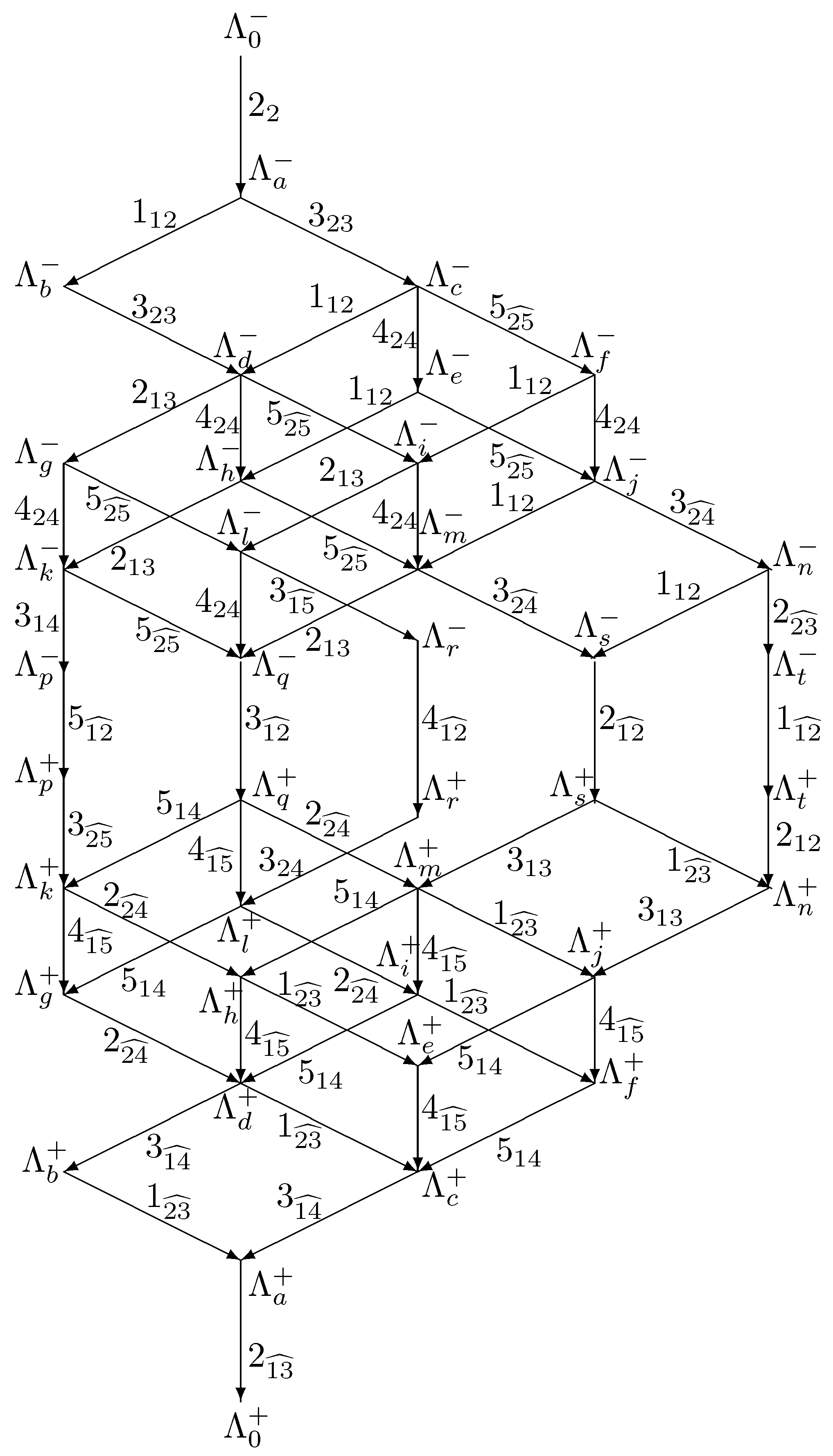
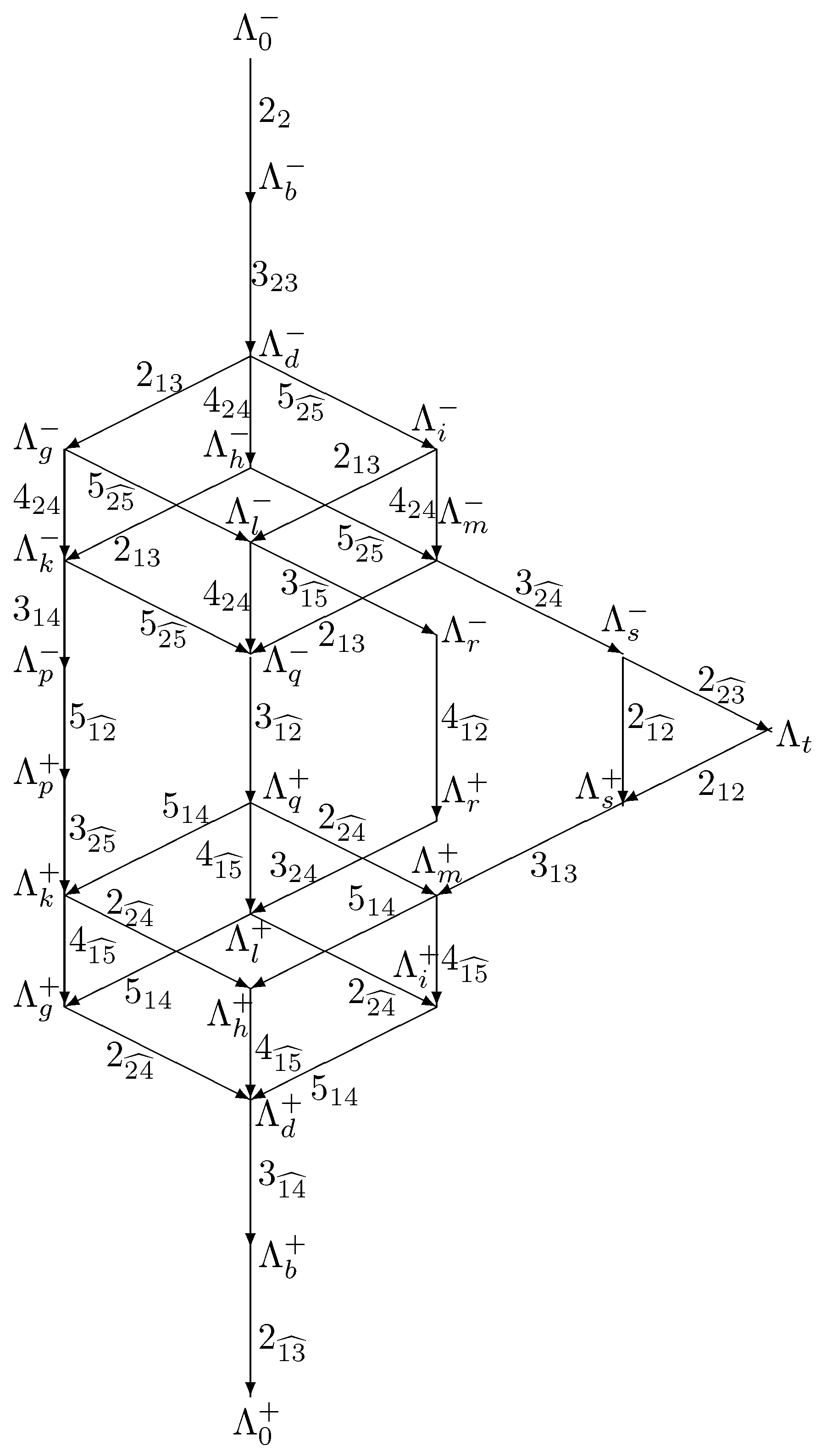
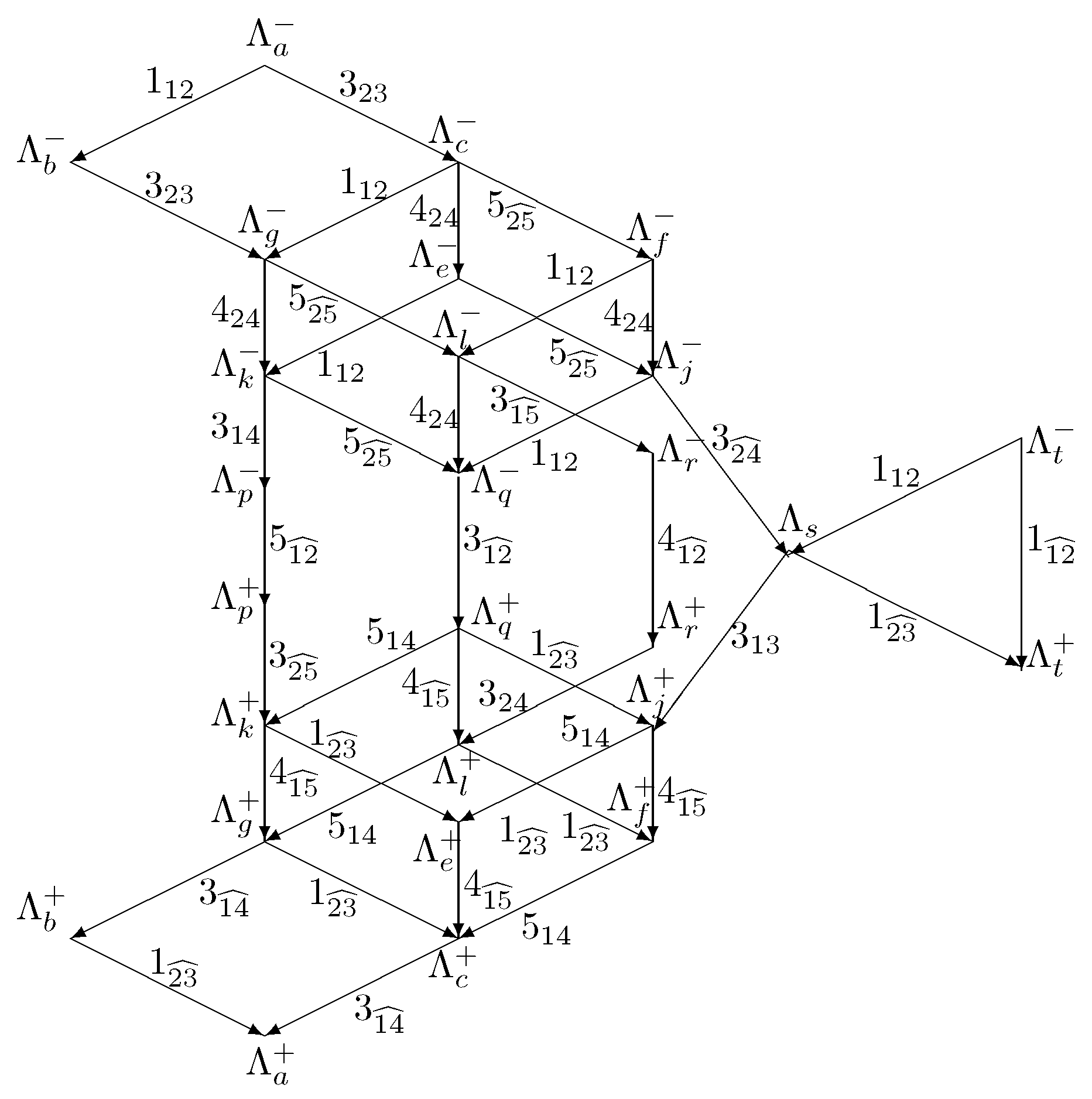
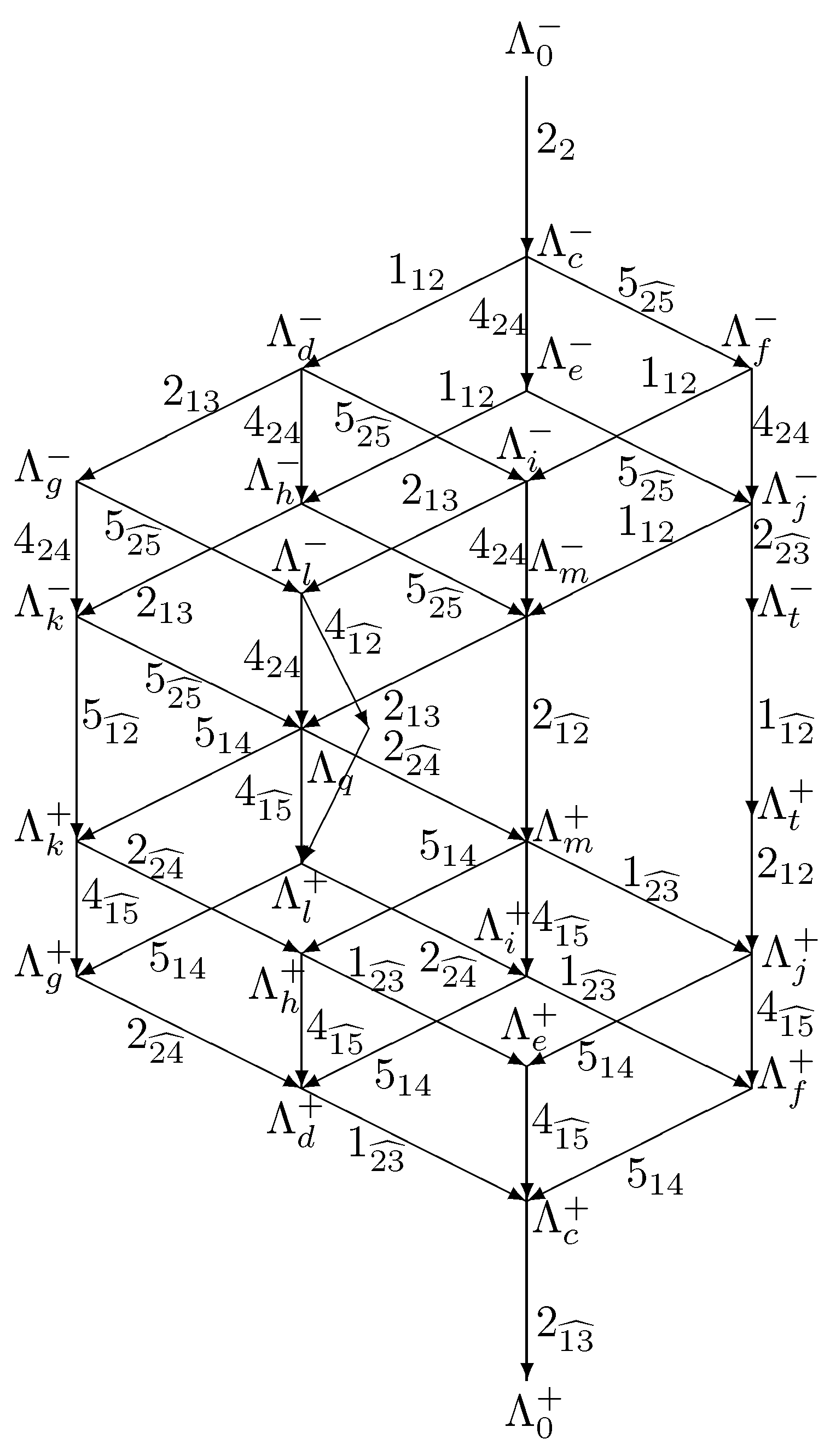
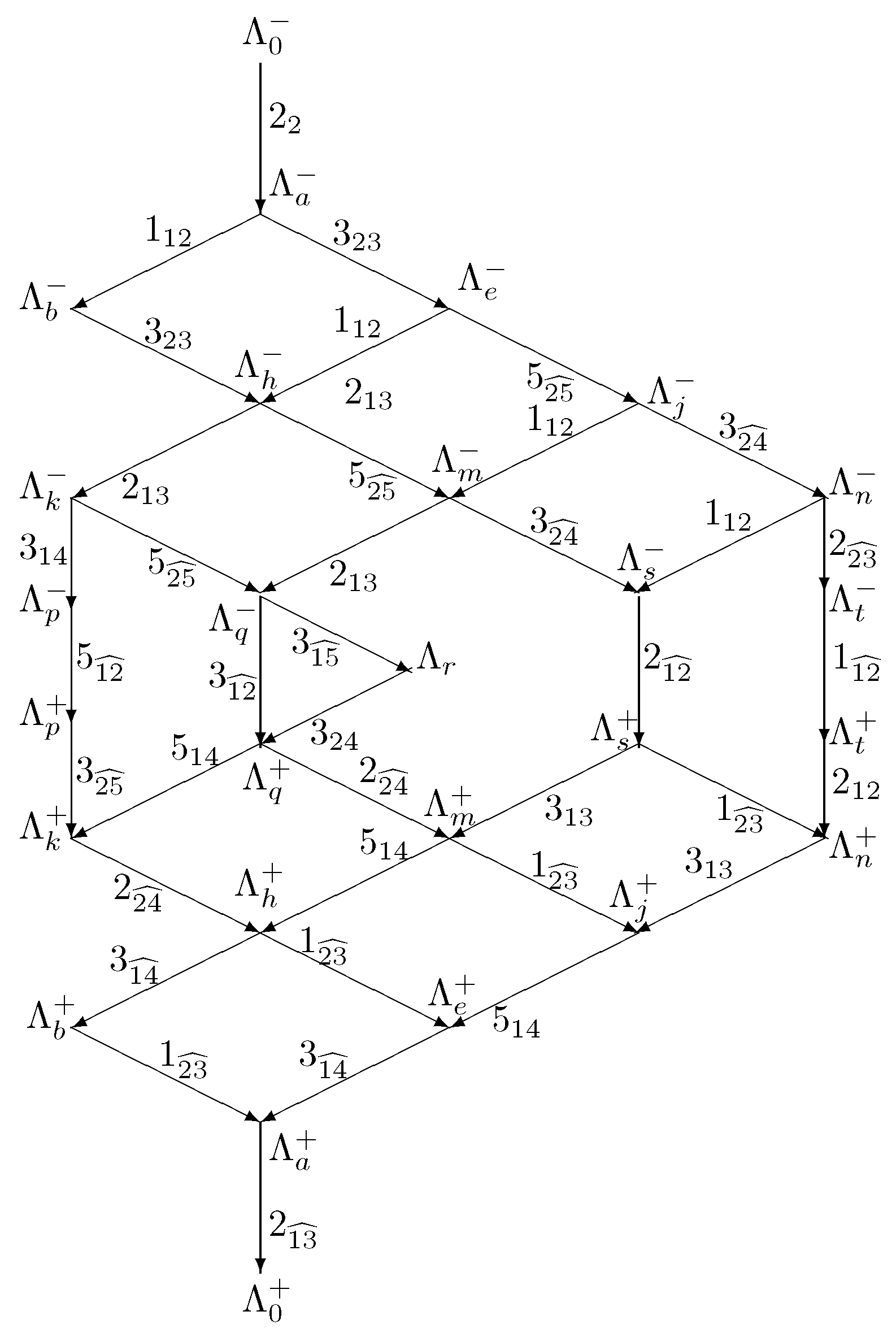

Publisher’s Note: MDPI stays neutral with regard to jurisdictional claims in published maps and institutional affiliations. |
© 2022 by the author. Licensee MDPI, Basel, Switzerland. This article is an open access article distributed under the terms and conditions of the Creative Commons Attribution (CC BY) license (https://creativecommons.org/licenses/by/4.0/).
Share and Cite
Dobrev, V.K. Heisenberg Parabolic Subgroup of SO∗(10) and Invariant Differential Operators. Symmetry 2022, 14, 1592. https://doi.org/10.3390/sym14081592
Dobrev VK. Heisenberg Parabolic Subgroup of SO∗(10) and Invariant Differential Operators. Symmetry. 2022; 14(8):1592. https://doi.org/10.3390/sym14081592
Chicago/Turabian StyleDobrev, V. K. 2022. "Heisenberg Parabolic Subgroup of SO∗(10) and Invariant Differential Operators" Symmetry 14, no. 8: 1592. https://doi.org/10.3390/sym14081592
APA StyleDobrev, V. K. (2022). Heisenberg Parabolic Subgroup of SO∗(10) and Invariant Differential Operators. Symmetry, 14(8), 1592. https://doi.org/10.3390/sym14081592




